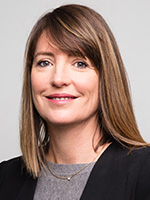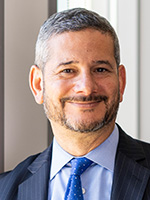Perpetual’s plan of attack with global expansion
Aided by its two new global funds management subsidiaries in the US, Perpetual is giving its institutional distribution capabilities an overdue boost. And it is starting to pay off.
Trillium Asset Management, an ESG specialist acquired early this year, is up for mandates in Europe, Asia and Australia. “We just have to do the same for Barrow Hanley now,” Rob Adams, the Perpetual managing director, said after his online investor presentation last week (December 9).
He was buoyed when the market pushed Perpetual stock up 5.7 per cent following the presentation, which included speakers from both the US-based managers. Barrow Hanley (full name: Barrow, Hanley, Mewhinney & Strauss), the larger of the two with US$46 billion under management, has no retail products, while Trillium, a fast-growing boutique with about US$3 billion, is predominately institutional but with a small retail presence.
Adams said: “Perpetual had a decent institutional book but a fair chunk of that has gone in recent years. I think we underinvested in the institutional space. The first thing we did was to get out and talk to people. Adam Quaife [head of global distribution in Sydney] is an insto person and we are in the throws of hiring another insto person for Sydney… Now that we have a bigger suite of capabilities, we are more relevant to institutional investors.”
Adams recruited Quaife in December last year, after he had spent nearly 18 years at Franklin Templeton. They recruited Chuck Thompson in Chicago as head of distribution and strategy for the Americas this March. He had spent 15 years at Henderson Global Funds, of which Adams was executive chair, EMEA, before taking the top job at Perpetual in September, 2018. Adams said last week that they had plans for distribution in Canada and Latin America, too.
From an operational point of view, he said he would not interfere with his two US firms, such as convincing them to use the same asset servicing platform as the one Australia does.
“These businesses have been operating for 40 years and they’re terrific,” he says. “We don’t want to unnecessarily disrupt anything. We’ve got no set plans for those sort of changes.”
Custody tender
An asset servicing review was imposed on Perpetual late last year, however, when its custodian of nearly 20 years, RBC, announced a deal with Citi and an exit from Australia. Perpetual and RBC’s other clients – all fund managers – were forced to look for a new one. The word is that State Street is the likely winner after Citi, which was RBC’s preferred partner for its clients, decided not to contest the Perpetual contract.
Adams said that a decision had not been made on who the manager would go with. But he confirmed that Mercer Sentinel had been appointed to advise on the process. “We had our first physical board meeting this week and Peter Baker [Australian head of Mercer Sentinel] Zoomed in.”
Mercer was appointed to the task early this year and since then, thanks to the US acquisitions, Perpetual has doubled in size. Other custodians say they were not surprised that Citi did not put in a bid because of the complexity of Perpetual’s funds and the rusted-on nature of its former relationship with RBC. RBC entered the Australian market in 2001 by buying the Perpetual Fund Services business.

Under his new structure, Adams promoted Amanda Gillespie to group executive, Perpetual Asset Management Australia and David Lane as group executive, Perpetual Asset Management International. Amanda Gazal, a new recruit, is chief operating officer and Chris Green, who has been with Perpetual for 14 years, is chief financial officer.
Although its funds under management are still relatively small, Trillium’s growth has been strong off the back of good performance and increasing interest in ESG integration by pensions funds. Assets under management have almost quadrupled since 2010, from US$782 million. Barrow Hanley, on the other hand, has had a typical value manager’s roller-coaster ride over the 10 years, starting the period with US$58 billion, peaking at US$97 billion in 2014 and then back to US$46b billion this year.
In terms of enhancing the Australian and New Zealand business, Perpetual launched in August two locally domiciled funds for Boston-based Trillium – an ESG global equity fund and a global sustainable opportunities fund, which is more concentrated and has a more aggressive risk profile.
Adams said Trillium could also be leveraged for Perpetual at the corporate level. For instance, Trillium is providing input to the company’s annual sustainability report and advice on its diversity and inclusion programs.
“The interest in Trillium has been quite amazing,” he said. “They didn’t have any Australian clients and one of the big plusses for them was that we were from Australia. They did their own due diligence on us.” Of Trillium’s 42 staff, six are in a special advocacy team.
Barrow Hanley has developed a proprietary ESG screening process for all its stocks, such that ESG is taken into account for every fund. Adams said they both fit the Perpetual philosophy with ESG, the manager being among the early signatories to PRI, in 2007, and having a longstanding ethical equities fund and an ethical credit fund.
While their value style has hurt Perpetual’s and Barrow Hanley’s fund flows over much of the past 10 years, Adams said both managers were “sticking to their knitting”. He noted that the past three months might be showing signs of a rotation back to value “but it’s early days”.
The 75 per cent of Barrow Hanley acquired by Perpetual, with management and staff owning the other 25 per cent, goes back to 1980 when the first multi-affiliate manger, Boston-based United Asset Management, was launched by Norton Reamer. UAM backed the growth of Barrow Hanley, which was constituted in 1979, along with an increasing array of managers of all persuasions over the subsequent 20 years.
The stake changed hands after UAM went into a decline and was eventually acquired by Old Mutual in 2000 for US$1.46 billion cash. By then, its profile of more than 50 managers at its peak, had shrunk to less than a dozen. Old Mutual changed its brand to BrightSphere in the US market in 2018.
But Barrow Hanley powered on and when at its peak for assets under management in 2014, it appointed BNP Paribas Investment Partners as a third-party marketer for Australasia. BNP changed its business model a few years later and the distribution arrangement languished.
“So, they are used to having an institutional partner like Perpetual,” Adams said. They also like the fact that Perpetual has a funds management operation and is not just a holding company.
Previous chief executives at Perpetual have not had a lot of success with their plans to expand the investment management arm internationally. While not the biggest move in that direction – this year’s two acquisitions led by Rob Adams is the biggest – the boldest was under David Deverall, who was chief executive from 2003-2011.
One year into his tenure, after a quiet start to the managing director role, Deverall surprised the market by announcing Perpetual was launching a global capability to be based in Dublin. The manager had lifted out four senior investment professionals from Bank of Ireland Asset Management, which had an Australian sales office that was particularly successful with the not-for-profit funds.

The four Dubliners were deputy CIOs Des Sullivan and John Nolan, and senior portfolio managers John Forde and Richard Kelly. They received A$28 million worth of Perpetual shares as part of their remuneration. There would be an increase in total costs of $15 million plus start-up operational costs of $5 million.
Rory MacIntyre and Patti Eyers were to relocate from Perpetual in Sydney to the new Dublin office to manage and develop the business. Support in the form of 16 other staff would be forthcoming within two months of the announcement. Deverall said it was expected that the new international arm would be profitable in its second year.
As it turned out, the operation suffered accrued losses of €43.9 million (A$71 million) by the time it was announced, in August 2011, by Deverall’s successor, Chris Ryan, that the business would be shut down, forcing about 19 redundancies.
It was open to conjecture whether Deverall’s idea was a bad one. If successful, for instance, it would have been a cost-effective entry point to international investing. And other take-outs had worked for other firms. But its execution was certainly not good.
For instance, those industry funds which were so enamoured with Bank of Ireland Asset Management were not consulted by Perpetual and were as surprised as the market was when the take-out was announced. Industry funds still, but more so back then, tend to do things in tandem or small groups, preferring to invest alongside like-minded investors. In this case, they not only declined Perpetual’s offers to stick with the investment team under the new owners, they deserted the Bank of Ireland, which was forced to find a successor fund in the form of Wellington for its smaller global clients.
Chris Ryan, though, lasted less than a year as chief executive. An Australian fund manager, he had spent about 15 years prior to Perpetual in Hong Kong, most recently as regional chief for MSCI. The commonly cited reason for his departure from Perpetual was that he wanted to expand into Asia, but he fell fowl of the board.
Geoff Lloyd, who was heading up the Perpetual wealth business became the new group managing director in February 2012 and steadied the ship. He consolidated the business, with some initial cost cutting, before returning to more certain sources of growth domestically.
When he resigned in August 2018, there was considerable speculation that he was headed for a bigger job, perhaps the chief executive of AMP Ltd, but instead he took on a single big project, as chief executive of MLC. The project was to find a buyer for the company, which he did this year. IOOF paid NAB $1.43 billion for MLC and Lloyd left the firm in October.
Asked whether the failure of Perpetual’s first attempt at international expansion had weighed on his mind with the US acquisitions, Adams said: “No. That was a different era, different time, different place… This is a permanent decision. It’s a big deal.”
With those and future acquisitions, he said he was not so much influenced in a manager’s style, such as value or growth, as relevant capabilities, capacity and cultural connectivity. “The focus is to get the very best investors you can. The manager’s style is pretty much residual.”
In his presentation to investors he referred to always being on the lookout for more expansion opportunities. “We do think that next year will be very active for M&A and we have to keep our finger on the pulse. In the short term it’s more likely that we do some bolt-on things and add a team here and there.”
While he is ambivalent to style, he is insistent that Perpetual, including its affiliates, will remain an active manager. “Passive has its place. I just don’t think it will be at Perpetual.”
In terms of cultivating and maintaining talent, the key ingredient in getting the best investors possible, he said he could not think of any firm, globally, which had managed succession of its money managers as well as Perpetual – over six generations. Over the past 20 years, names such as Anton Tagliaferro, John Murray, Peter Morgan, John Sevior (later joined by Matt Williams) left to start their own firms, invariably taking a billion or so with them, but Perpetual hardly missed a beat.
– Greg Bright









